While data are very important to individuals as well as enterprises, they are easy to get lost due to all kinds of reasons. Once you fall victim to unexpected data loss and find yourself with no backup or disaster recovery plan, how terrible it is! Thus, I’m writing this to help you go out of the woods.
In this highly informative era, information security is the first thing to consider, whether it is for an individual or an enterprise. This is why backup and disaster recovery becomes one of the hottest topics of the day. Indeed, a thoughtful backup and disaster recovery strategy is of great importance especially when customer information and important meeting data are lost all of a sudden.
Jon Toigo, a famous analyst and storage specialist, shared his thoughts on backup and disaster recovery: they are integrally related, at the 2016 Chicago storage decision Tech Talk Summits. According to Jon Toigo, the disaster recovery plans have to be tested periodically in order to make sure that they are going to work when necessary and to make sure that they’re still up to date when the time comes. After all, it makes no sense to do a backup unless it’s in preparation for unexpected disaster recovery.
The individuals, who have a lot of important data, and the companies, no matter it is big or small, should know well that backup is actually a necessity rather than a luxury. And a piece of professional data recovery software, like MiniTool Power Data Recovery, should be prepared in advance for the timely data recovery from disaster.
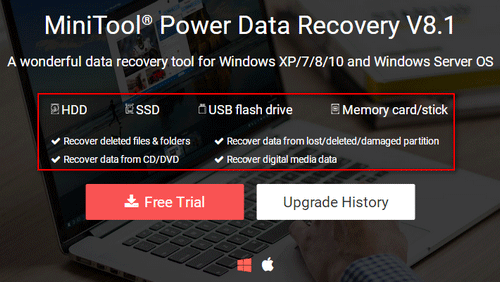
Backup and Disaster Recovery Strategy Is Necessary
For both individuals and SMEs (Small and Medium-sized Enterprises), there are various kinds of data that need to be protected:
- Individuals: personal photos, study materials & precious videos
- Enterprises: internal documents, customer-facing marketing information & transactional data, etc.
As you can easily understand – it’s a disaster to lose significant data and what’s more terrible is that a series of disastrous consequences will be caused by the data loss.
Taking all these factors into consideration, I’d like to give my suggestions on backup techniques and disaster recovery strategies. Now, let’s take a closer look at the useful backup techniques and disaster recovery procedures I put together. In the following content, I’ll help you choose the correct backup and recovery software and how to use them to complete data backup and recovery.
You may read the Ransomware Prevention Policy to know how to fix when getting attacked by ransomware.
Disaster Recovery Plan
When disaster actually happens to you, you must want to acquire the useful disaster recovery solutions, right? So why don’t you prepare for that in advance? Here are the disaster recovery plan steps you should follow.
Step 1: Turn to Backup for Help
If the disk or system has been backed up well, there’s nothing to worry about when disaster hits on you. You can get help directly from the backup – restore the system/disk quickly to avoid any consequences that could be resulted from disaster.
But, this method is not a panacea; it may also fail you due to mainly two reasons.
- The corresponding backup is broken somehow;
- The lost data ruined by the disaster have not been backed up yet.
In this case, you need to move on to the next step in order to finish backup disaster recovery.
Step 2: Recover Files from a Disaster Immediately
In general, disaster is divided into two types:
- Natural disaster (natural hazard)
- Man-made disaster (anthropogenic hazard)
The data recovery after man-made disaster is easy to be finished as long as the media used to store data are in good condition. Right now, let’s see how to recover data after disaster.
Firstly, to enjoy high-quality disaster recovery services, you have to choose the safe and powerful recovery tool. I think MiniTool Power Data Recovery can meet your needs since it has helped millions of people solve their data loss problems.
For users who want to recover significant personal data, I recommend Personal Standard License (doesn’t support Windows Server); yet, as for the disaster recovery for small business, I recommend Business Standard License (don’t include snap-in WinPE Bootable Builder, which is able to help you recover data when OS won’t boot) or Business Deluxe License (include snap-in WinPE Bootable Builder). In both cases, you can use the Trial Edition (which is totally free for you to have a try) before purchase.
MiniTool Power Data Recovery TrialClick to Download100%Clean & Safe
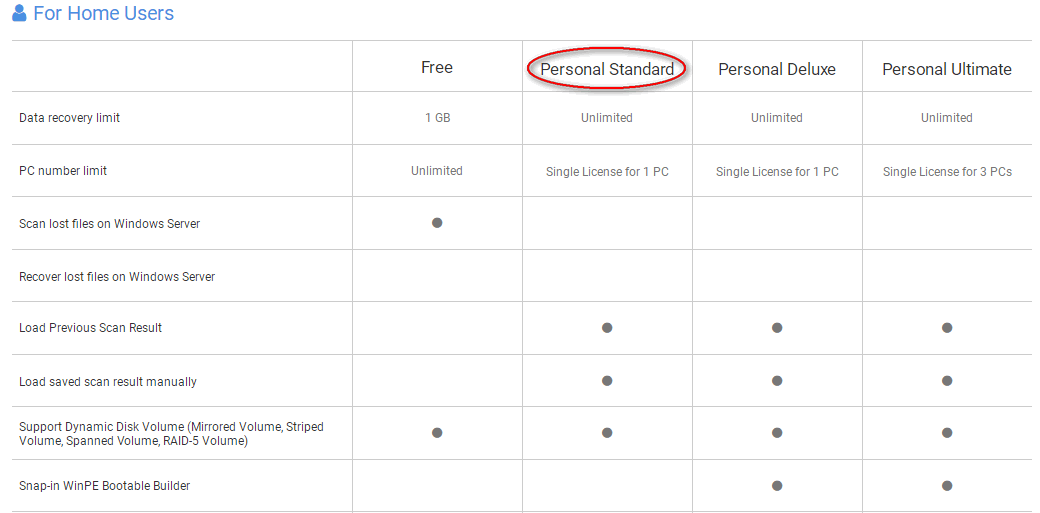
Here is the comparison of different license types!
Secondly, after choosing the license most suitable for your case, you should get the setup program, finish the installation on your computer and register the software with your license. Then, you will see the main interface. After that, you should start data recovery officially (I’ll take the data recovery in Win10 by using Trial Edition as an example).
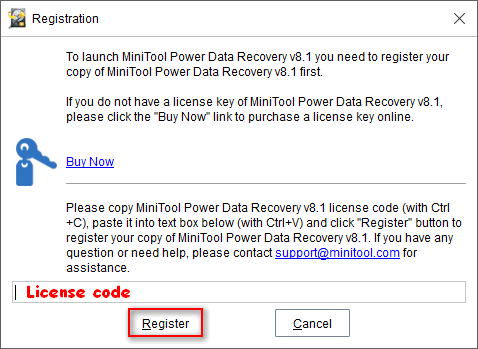
Thirdly, please pick out the most proper option from the left side of main interface. After clicking on the certain option, you’ll be provided with a list of drives on the right side. Now, you need to select the drive that includes the data ruined by a man-made disaster. After that, please click on the “Scan” button to detect files in this drive sector by sector.
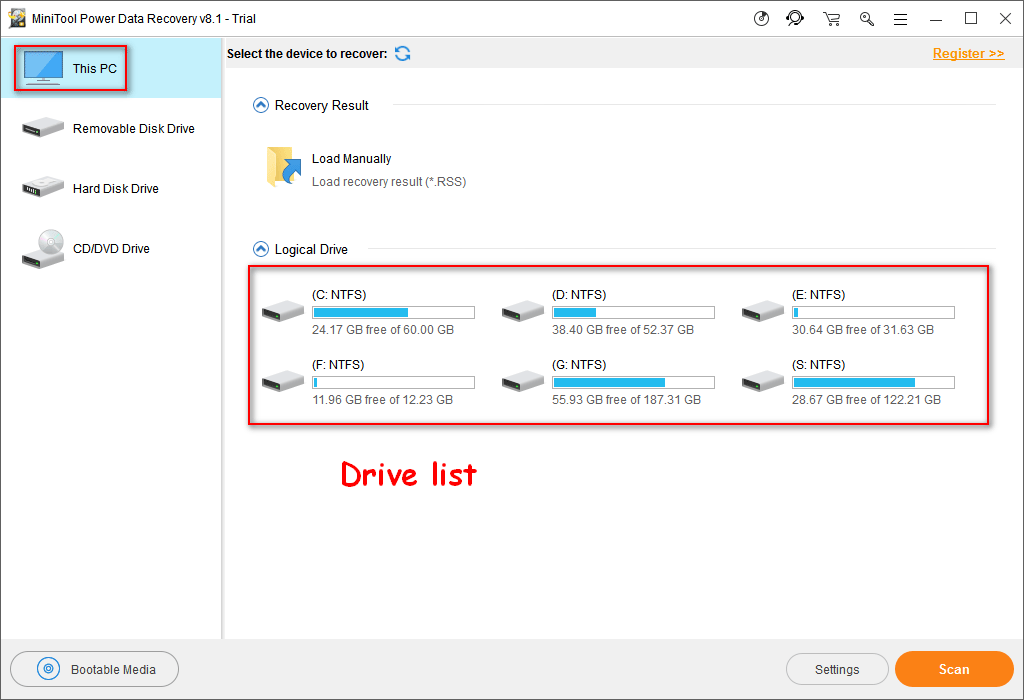
If you want to recover files from a removable flash drive or external disk after the disaster, please remember to connect it to the computer before you run the software. Please don’t worry if the disk is not recognized by computer.
- Fix USB flash drive not recognized problem.
- Deal with external hard drive not showing up issue.
Fourthly, wait until the end of the full scan to get the best recovery result. Then, you’ll see a lot of items that have been found by the software and listed in order. At this time, you should do two things:
- Browse the found data carefully to pick out the ones you need.
- Click on the “Save” button to set a safe storage path for these files.
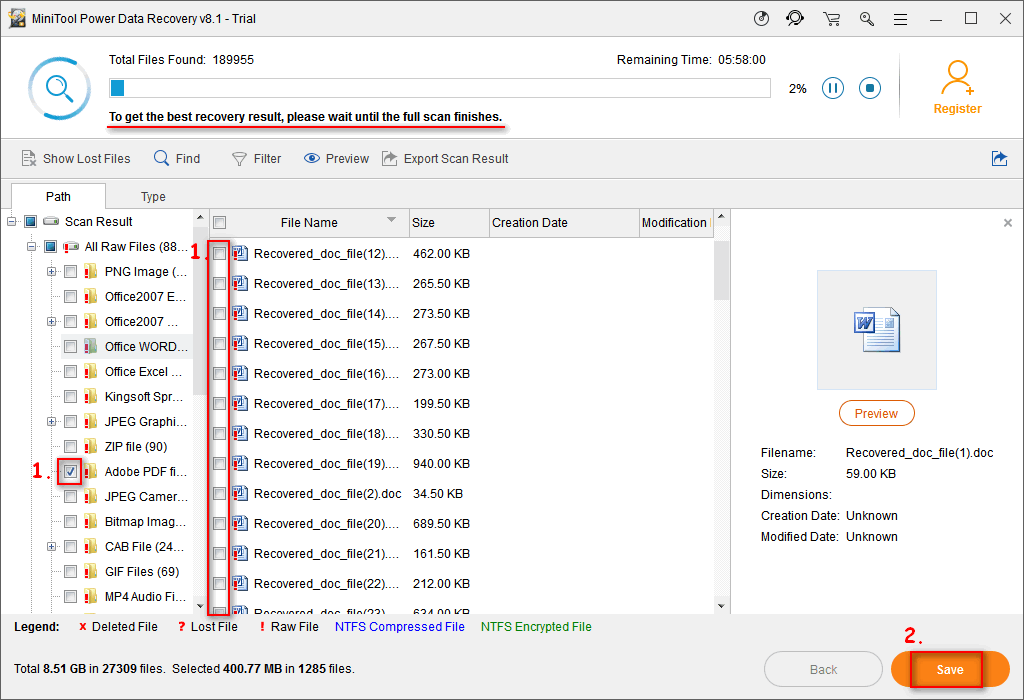
I don’t advise you to choose the original disk as the storage destination in this step since it will result in data overwriting. But if you have only this disk to store data and you’re pretty clear that the software has found all the needed files for you this time, you can restore the selected files to the original removable disk.
Finally, please close the software when a prompt window appears and informs you that all the selected files have been saved to the appointed place. And then, you can go to check the recovery result.
This is how to recover files from human-induced disaster and some natural disaster accidents. Considering that the natural disasters will damage storage devices in most times, I advise you to ask professional agencies for help (to see whether they can open the drive in an absolutely safe environment so as to perform data backup and recovery).
Please click here to know more about the data recovery plan on Windows Server.
Step 3: Make Backup to Re-secure Data
The next step of this disaster recovery policy is to re-secure the data (including existing files and recovered files) by making a backup. I advise you to do a full backup at first, and then, you can choose from incremental backup and differential backup the next time. This is a safe bet.
Again, you should choose a backup & restore software with both good performance and high safety.
Software suggests: MiniTool ShadowMaker. It has many features and all of them are user-friendly.
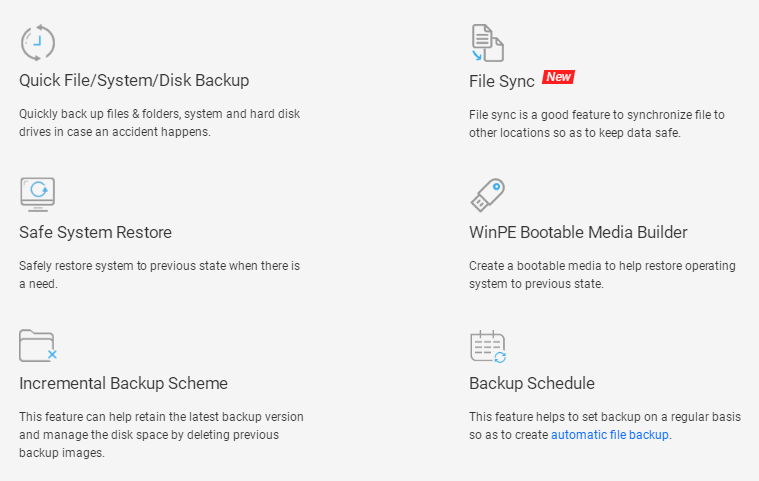
Step 4: Find or Develop a Rescue Plan That Suits You
After you have finished the backup and data recovery, your work is not done yet; you also need to look for or make a unique backup and disaster recovery plan so that you can handle it calmly in the face of disasters later on.
Backup Techniques & Tips for SMEs
4 Types of Backup Techniques
- Full backup: by using this method to make a backup, the copy of all files will be saved and occurred automatically according to a pre-set schedule that you chose. Since there are always too many files needing to be backed up, they are often compressed for saving disk space. This could cause heavy access to the disk used for backup, shorten its service life, and consume the network bandwidth. Yet, the most obvious highlight of this backup technique is the easy restoration.
- Incremental backup: incremental backup refers to the way of data backup that only saves the items that have been created or changed after the last backup. The volume of data that will be backed up is getting smaller during the iteration, so obviously, this will take the lead in saving disk space and reducing network bandwidth usage.
- Differential backup: this backup technique is very similar to the previous one – incremental backup. The big difference between them is that the new and updated items will be stored in each backup operation since the last full backup. That is to say, the changed or newly created item will be a part of each differential backup until you finish another full backup. Differential backup simplifies the recovery, but requires more space and network bandwidth, when it is compared to incremental backup technique.
- Virtual full backup: basically speaking, a database will be used during virtual full backup for tracking and managing the backed up data; this helps to avoid some of the pitfalls found in other backup methods. By using this backup technique, you’re able to synchronize the backup data to the database easily at fixed periods.
All in all, backing up the vital data & keeping the backup updating is a very important work to do.
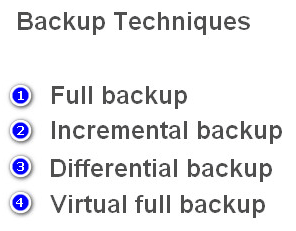
Useful Backup Tips
Practical backup tips you should keep in mind.
- Choose a preferred method for system/disk backup (Microsoft built-in Backup and Restore function or a third-party backup program).
- Pay attention to the safety, convenience and the recovery performance and complexity of the program when selecting a backup scheme.
- Be careful enough during backup process so as to avoid causing unnecessary troubles.
- Update the backup on a regular basis, instead of putting it aside once it’s done.
- Be sure to select the correct backup and recovery location in order to avoid data overwriting.
- …
In conclusion, MiniTool ShadowMaker is a great choice for you whether you are a novice or an expert! To tell the truth, it is rewarded one of the best Backup and Restore Software in 2018 and you are able to complete each task with just a few clicks (just follow the prompts in software interface to backup/restore easily). Now, you may click on the following button to start using!
MiniTool ShadowMaker TrialClick to Download100%Clean & Safe
Technical Terms for Data Backup and Disaster Recovery
- Disaster Recovery (DR): according to Wikipedia, “disaster recovery involves a set of policies, tools and procedures to enable the recovery or continuation of vital technology infrastructure and systems following a natural or human-induced disaster.”
- Disaster Recovery Plan (DRP): the disaster recovery plan includes a set of procedures/steps to recover data and protect business IT infrastructure when disaster (especially man-made disaster) comes. And I strongly advise you to work hard on finding out how to prevent man-made disasters effectively.
- Recovery Point Objective (RPO): the recovery point objective refers to the maximum allowable or maximum tolerable outage that won’t lead to data loss caused by a major incident. RPO gives people time to work out the problem and restore the equipment to normal operation.
- Recovery Time Objective (RTO): accordingly, the recovery time objective means the targeted time duration and the service level. In this time period after the disaster, the business process must be restored; otherwise, a series of terrible consequences will be brought by the disaster.
- Business Continuity Planning (BCP): business continuity planning refers to the actions of making plans (creating prevention and recovery systems) to deal with the potential threats that will interrupt the normal operation of equipment and company.
Draw a Conclusion
Do not think disaster will never come to you. In fact, it could hit on anyone or any business. And once you’re not fully prepared when disaster comes, you will suffer the terrible consequences.
After reading what I’ve covered in this article, you must be aware of the importance of data backup and recovery. I have shared my opinions on backup and disaster recovery strategy: choose quality data backup and recovery tool to enjoy favorable disaster recovery services.
The most important thing of all is, of course, staying calm when disaster gets to you & trying your best to recover from the disaster in short time.